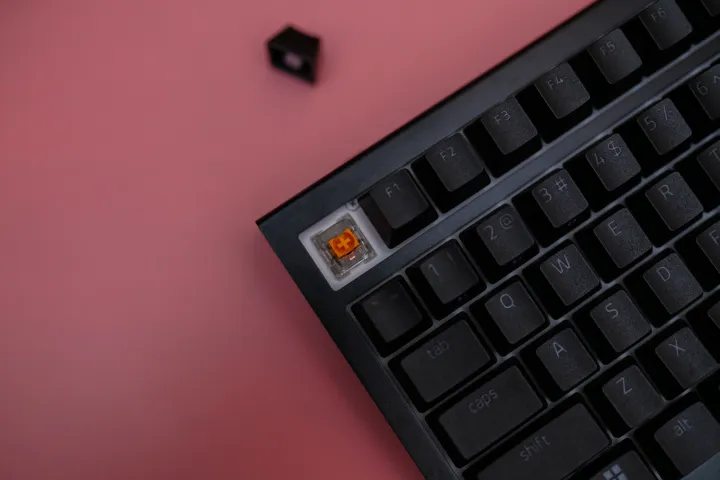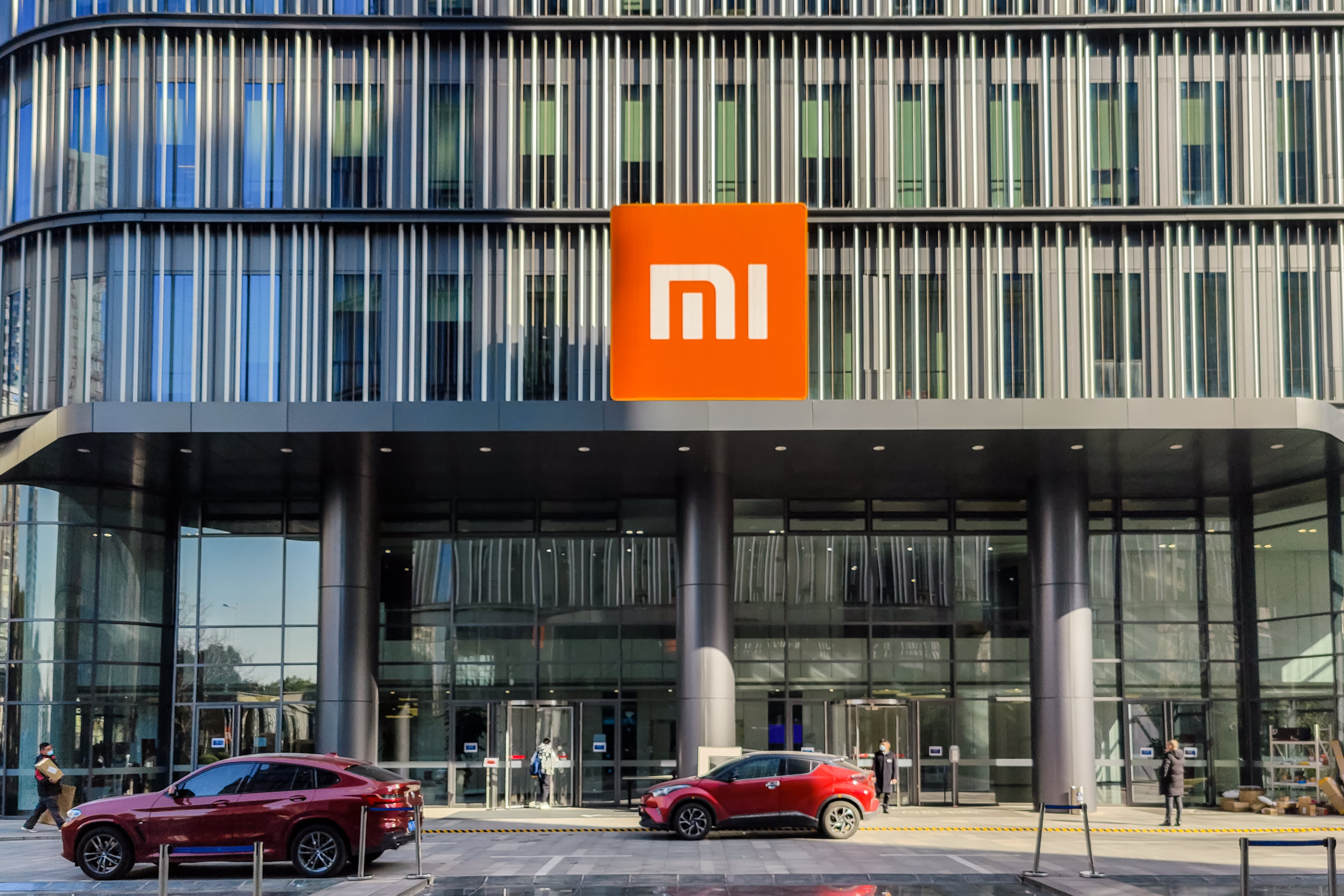Razer Black Widow V4 Pro 75% Wireless review: What was Razer thinking?
The Razer Black Widow V4 Pro Wireless has the specs, feel, and RGB to compete, but one thing has me scratching my head -- the price.


Razer Black Widow V4 Pro 75% Wireless
MSRP $299.00
Pros
Hot-swappable design Great sound with FR4 plate and gasket mount Tons of RGB customization Bright, multi-use OLED displayCons
Way too expensive Terrible battery life Mostly plastic constructionRazer has Asus in its sights with the Black Widow V4 Pro 75% Wireless. Asus kicked off a revolution among the best gaming keyboards with the release of its Azoth, and Razer is finally responding with an updated version of its Black Widow Pro. You get the 75% form factor, an enthusiast-grade internal construction, wireless, and the ability to swap in whatever key switches you want. What’s not to love?
Quite a bit, it turns out. The Black Widow V4 Pro 75% is a good keyboard, make no mistake, but it also arrives at the obscene price of $300. It just doesn’t hit the mark for that much money. Razer has the specs, it has the feel, and it certainly has the RGB, but I can’t justify the Black Widow V4 Pro 75% Wireless given its asking price.
A disappointing first impression
 Jacob Roach / Digital Trends
Jacob Roach / Digital TrendsMy first impression of the Black Widow V4 Pro wasn’t great, and that mainly comes down to Razer’s own switches. After hearing the enthusiast-level features of this keyboard — more on those next — I expected a sublime typing experience right away, especially when Razer is asking $300 for this keyboard. That’s not what I found.
This keyboard comes with Razer’s third-generation tactile switches, and they aren’t great. For starters, linear options reign supreme especially among gamers, but even among most mechanical keyboard enthusiasts. Razer’s switches have a hollow clack to them that, although better than a gaming keyboard like the Corsair K70 Pro, is still far behind the out-of-the-box feel of something like the Keychron Q1 HE.
With a keyboard this expensive, first impressions are important.
The other issue concerns build quality. Razer boasts about an aluminum top case for the Black Widow V4 Pro, which I assumed meant a top shell similar to the Asus ROG Azoth. Razer’s definition of a “top case” is clearly different than what I expected. The keyboard is mostly built out of plastic, short of a thin layer of aluminum that’s laid over the top. In a time when a keyboard like the GMMK 3 exists, I’m scratching my head as to why Razer chose plastic for a $300 keyboard.
With a keyboard this expensive, first impressions are important. As I’ll dig into in the next section, you can make the Black Widow V4 Pro a much nicer keyboard, and no small part of that is because of the design choices Razer made internally. Externally, however, it feels like Razer cut quite a few corners for the price it’s charging.
 Jacob Roach / Digital Trends
Jacob Roach / Digital TrendsOne area where Razer didn’t cut any corners is the wrist rest. Razer includes a magnetic faux leather wrist rest that’s very comfortable to use. It’s super plump, and it never slid around during intense typing sessions. The Black Widow V4 Pro may not feel premium on the fingers out of the box, but it certainly feels premium on the wrists.
Enthusiast flourishes
Although I don’t love the mostly plastic construction and the switches aren’t my favorite, the Black Widow V4 Pro really sets you up for success if you decide to replace the switches. This is a hot-swappable mechanical keyboard, and it accepts any 3-pin or 5-pin MX switch. I threw in some WS Morandi switches, which are a heavier linear switch that come with factory lubrication, and the Black Widow V4 Pro immediately became a much nicer keyboard.
 Jacob Roach / Digital Trends
Jacob Roach / Digital TrendsIt’s no surprise that the switches made a huge difference. Like most keyboards in this price range, Razer chose a gasket mount for the Black Widow V4 Pro, which suspends the switch plate between sets of silicon gaskets. It feels much better for typing and gaming than a traditional top mount. Razer also includes three layers of sound dampening in the keyboard, which makes a world of difference for the sound — the Asus ROG Strix Scope II 96 is a testament to that.
Those two factors aren’t unique, but Razer has a few elements that are. First, Razer is using FR4 for the switch plate. FR4 is a laminate material that’s quickly becoming the go-to option for enthusiast-grade mechanical keyboards. It’s softer than aluminum but heavier than polycarbonate, making it a great, cost-effective option for producing the low-pitched thock that mechanical keyboard enthusiasts are after.
In addition, Razer basically did a tape mod. If you’re unfamiliar, a popular mod for mechanical keyboards is to place painters or masking tape on the back of the PCB, which is shockingly good at absorbing high-pitched frequencies. Razer is doing something similar, just without painters tape — apparently Razer needs to abide by “laws” or something.
Mainstream sensibilities
 Jacob Roach / Digital Trends
Jacob Roach / Digital TrendsAlthough Razer made plenty of enthusiast choices under the hood, there are a lot of elements of the Black Widow V4 Pro that only a mainstream brand like Razer could pull off. First, wireless. You get 2.4GHz, Bluetooth, and a USB-C connection, but Razer offers up to a 4,000Hz wireless polling rate through its dongle. It’s the same dongle you’ll find on the Viper V3 Pro, which is a chunky USB-C device that enables such a high polling rate.
You also get an OLED display, following on the heels of the Asus ROG Azoth and Azoth Extreme. Razer includes a few different options for the display. You can display a photo or GIF, including one you upload, or you can choose between keyboard info, system info, or an audio visualizer. In addition, Razer includes a handful of screensavers for when the OLED times out. I stuck with a GIF, pulling up the keyboard information by holding the Function key instead.
The Black Widow V4 Pro doesn’t have dedicated media keys, but it doesn’t need them.
Alongside the OLED display, you get the Command Dial. You can roll it in either direction to adjust your volume, or press it to mute your audio. A dedicated button below the Command Dial allows you to change what it does, however. You can use it to access media controls, adjust your brightness, switch between apps, and even scroll webpages.
The Black Widow V4 Pro doesn’t have dedicated media keys, but it doesn’t need them. Razer wraps up a lot of functions that would normally be reserved for extra keys or special hotkeys into the Command Dial. And the Black Widow V4 Pro is much easier to get around as a result.
No one does RGB like Razer
Razer always makes a big fuss about how great its RGB is, and for good reason. The Black Widow V4 Pro looks incredible. It’s not just that there’s RGB — we have plenty of that — it’s how smooth the RGB is. The light reflects off the FR4 plate to wash out the keyboard in color. The translation of the light through the key cap legends is perfect. And the two light strips that occupy the edges of the keyboard are perfectly diffused so you never pick up on a single LED.
 Jacob Roach / Digital Trends
Jacob Roach / Digital TrendsIt’s not just the quality of the RGB with Razer — it’s how you can customize it. As you’d expect, you get per-key adjustment, a wide range of preset effects, and multiple layers to adjust through Razer Chroma. I don’t go crazy with RGB for my peripherals, but even Chroma feels inviting. It has the power of Corsair iCue without being as overwhelming. And you can store your profiles onboard so you can take several different lighting effects with you.
For a company so associated with RGB, you expect this level of customization. Where Razer really stands out is how it’s able to integrate RGB with other devices and apps. Razer wraps all of this up in Chroma Connect, but there are two aspects of the integration. First, there are integrations with other RGB accessories, such as lights from Govee, Philips Hue, Nanoleaf, and Lifx, as well as PC components.
The second aspect is app support. Dozens of games have specific presets for Razer Chroma, including titles like Cyberpunk 2077, Ghostrunner 2, Hogwarts Legacy, and Diablo IV. Most of these games not only have a specific lighting preset but they also include effects that are triggered by in-game actions. Your keyboard scrambles when you’re hacked in Cyberpunk 2077, and it breathes red when low on health in Diablo IV. Even better, these presets are automatic — when you start the game, it’ll take over for your play session and return to your normal lighting effects after.
Abysmal battery life
Although the Black Widow V4 Pro looks incredible when it’s washed in RGB lighting, it comes with one major downside: battery life. With the OLED screen set to 50%, the RGB set to 70% with slow color cycling, and a 1,000Hz polling rate, I’m barely able to make it a full day with the keyboard. It dies in as little as 10 hours.
I kept the Black Widow V4 Pro 75% plugged in most hours of the day.
Obviously there are ways to improve the battery life. You can dim all the lighting or turn it off entirely, as well as set aggressive sleep modes. It’s just difficult to justify that as a proper use case for a wireless keyboard. This is a keyboard washed in RGB and packing an OLED display, and if you’re not going to use them, you’re throwing money away. The kicker here is that Razer offers the Black Widow V4 Pro 75% in a wired version for $170, which, short of the OLED display, is identical to this wireless version.
On top of the low battery life, the keyboard takes forever to charge. On the day I’m writing this review, I woke the keyboard up with 5% battery left. After plugging it in and using it for about five hours, it just barely went above 50%. You’d have more of a charge if you weren’t actively using the keyboard, but between the long charge time and limited battery life out of the gate, I kept the Black Widow V4 Pro 75% plugged in most hours of the day.
Just too expensive
 Jacob Roach / Digital Trends
Jacob Roach / Digital TrendsA day late and a buck more, the Razer Black Widow V4 Pro 75% Wireless just isn’t worth the money. You can pick up the Asus ROG Azoth for about $190 these days, which matches what Razer is offering here point-for-point, minus the FR4 plate. And, if you don’t mind shopping for some more niche options, keyboards like the Meletrix Boog75 offer an exceptional feel for much less money.
Don’t get me wrong — judging the keyboard on its own merits, it’s actually pretty good. The experience out of the box isn’t great, but Razer is offering a solid foundation to build a high-end keyboard with your own switches and key caps. Assuming you can settle for subpar battery life, the Black Widow V4 Pro 75% Wireless is a decent keyboard.
But don’t buy it right now. If you’re interested, wait until it goes on a steep sale — I wouldn’t spend more than $200 if you’re trying to get your money’s worth.

 BigThink
BigThink 
































